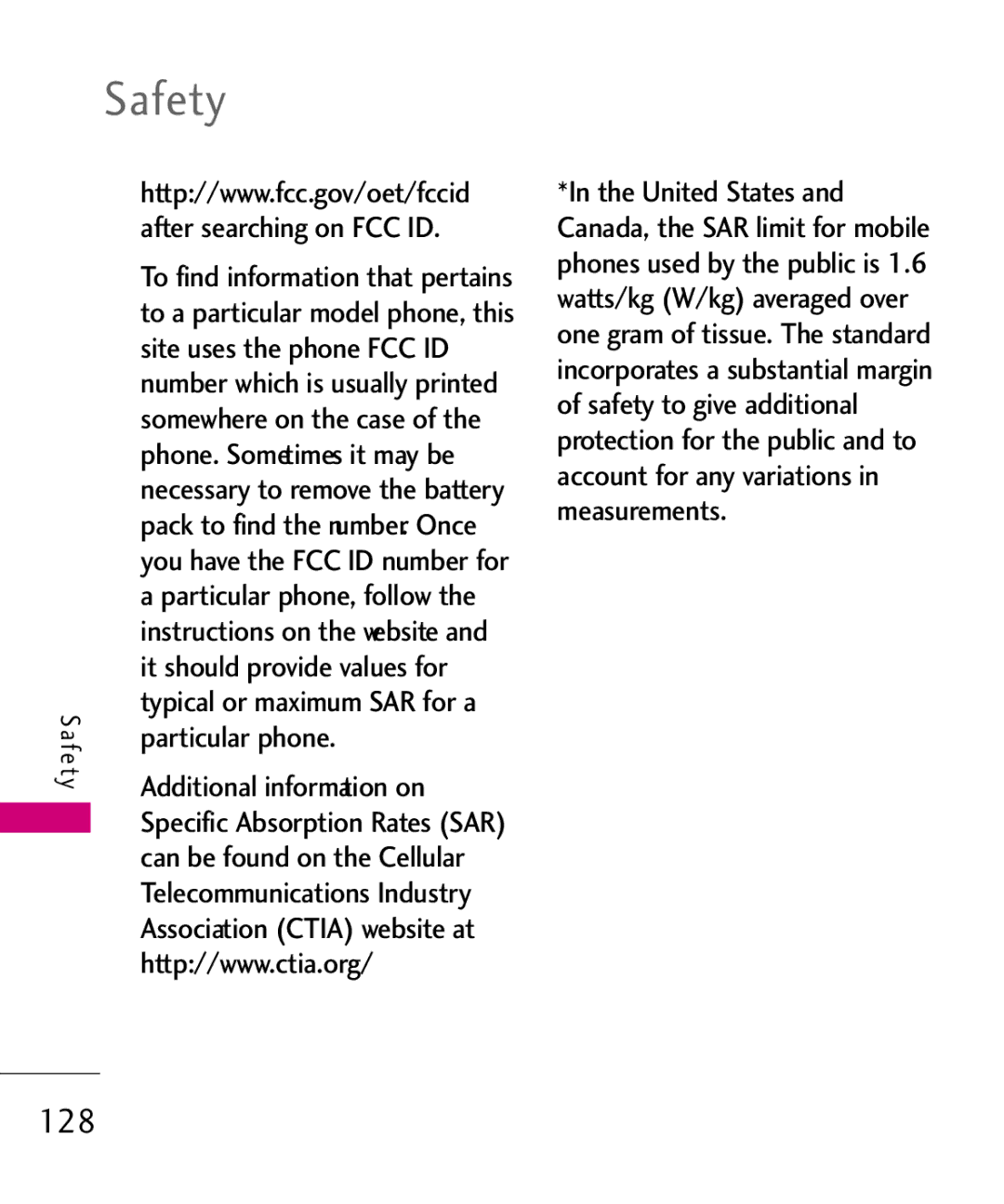Safety
http://www.fcc.gov/oet/fccid after searching on FCC ID.
|
| To find information that pertains |
|
| to a particular model phone, this |
|
| site uses the phone FCC ID |
|
| number which is usually printed |
|
| somewhere on the case of the |
|
| phone. Sometimes it may be |
|
| necessary to remove the battery |
|
| pack to find the number. Once |
|
| you have the FCC ID number for |
|
| a particular phone, follow the |
S afety | instructions on the website and | |
it should provide values for | ||
|
| typical or maximum SAR for a |
|
| particular phone. |
|
| Additional information on |
|
| Specific Absorption Rates (SAR) |
|
| can be found on the Cellular |
|
| Telecommunications Industry |
|
| Association (CTIA) website at |
|
| http://www.ctia.org/ |
*In the United States and Canada, the SAR limit for mobile phones used by the public is 1.6 watts/kg (W/kg) averaged over one gram of tissue. The standard incorporates a substantial margin of safety to give additional protection for the public and to account for any variations in measurements.
